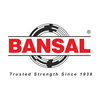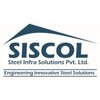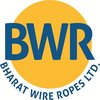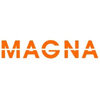Filter interviews by
Aeroflex Industries Production Engineer Interview Questions and Answers
Aeroflex Industries Production Engineer Interview Experiences
1 interview found
I applied via Campus Placement and was interviewed in Mar 2021. There were 3 interview rounds.
Interview Questionnaire
5 Questions
- Q1. What is fabrication process
- Ans.
Fabrication process is the process of creating a product by assembling, cutting, shaping, and joining materials.
It involves assembling, cutting, shaping, and joining materials
It can be done manually or with the help of machines
Examples include welding, casting, and machining
It is used in various industries such as manufacturing, construction, and automotive
- Q2. Diffrent types of welding process
- Ans.
There are several types of welding processes, including MIG, TIG, Stick, Flux-Cored, and Submerged Arc Welding.
MIG (Metal Inert Gas) welding uses a wire electrode and a shielding gas to join two metal pieces together.
TIG (Tungsten Inert Gas) welding uses a tungsten electrode and a shielding gas to create a precise and clean weld.
Stick welding, also known as Shielded Metal Arc Welding (SMAW), uses a consumable electrode...
- Q3. Final year project details
- Q4. Internship details
- Q5. Measuring instruments basics
Interview Preparation Tips
Top trending discussions






Interview questions from similar companies

I appeared for an interview in Jul 2023.

(1 Question)
- Q1. Any questions related ccm
(1 Question)
- Q1. Any questions related mechanical Engineer

Production Engineer Interview Questions & Answers
Bansal Wire Industriesposted on 10 Jun 2023
(3 Questions)
- Q1. Wire Drawing related
- Q2. Type of wire manufacturing of process
- Ans.
Wire manufacturing processes include drawing, annealing, stranding, and insulation.
Wire manufacturing starts with the drawing process, where a metal rod is pulled through a series of dies to reduce its diameter.
Annealing is then performed to relieve stress and improve the wire's ductility.
Stranding involves twisting multiple wires together to form a cable or conductor.
Insulation is applied to protect the wire and provi...
- Q3. Technology drafting
Interview Preparation Tips

I applied via Referral and was interviewed before Mar 2023. There were 3 interview rounds.
(1 Question)
- Q1. Technical related to applied position
(1 Question)
- Q1. Technical & general discussion
(1 Question)
- Q1. Salary & General background details

I applied via Naukri.com and was interviewed in Aug 2021. There were 2 interview rounds.

(5 Questions)
- Q1. What are tha fuction of otto cycle and Diesel Cycle?
- Ans.
Otto cycle is used in gasoline engines and Diesel cycle is used in diesel engines.
Otto cycle is a constant volume cycle used in gasoline engines.
Diesel cycle is a constant pressure cycle used in diesel engines.
Otto cycle has a higher compression ratio compared to Diesel cycle.
Otto cycle has a spark plug for ignition while Diesel cycle uses compression ignition.
Both cycles involve four processes: intake, compression, po
- Q2. Different b/w Stress and Strain?
- Ans.
Stress is the force applied to a material, while strain is the resulting deformation or change in shape.
Stress is a measure of the internal forces within a material, while strain is the measure of the deformation or change in shape.
Stress is typically measured in units of force per unit area (such as N/m^2 or Pa), while strain is a dimensionless quantity.
Stress can cause a material to deform or break, while strain is t...
- Q3. How many types of Ramming mass?
- Ans.
There are two main types of Ramming mass: acidic and basic.
Acidic Ramming Mass: used for lining induction furnaces and arc furnaces.
Basic Ramming Mass: used for lining steel ladles and EAF (Electric Arc Furnace).
- Q4. How Many Types of Steel?Explained tha percentage of Steel?
- Ans.
There are several types of steel, each with different properties and uses. The percentage of steel in a particular alloy can vary.
Types of steel include carbon steel, alloy steel, stainless steel, tool steel, and high-speed steel.
The percentage of steel in an alloy can range from as low as 0.2% to as high as 2.1% depending on the type of steel and its intended use.
For example, carbon steel typically contains around 0.2...
- Q5. Explain Thermodynamics Law 1st 2nd and 3 rd?
- Ans.
First law states energy cannot be created or destroyed, second law states entropy always increases, third law states entropy approaches zero at absolute zero.
First Law: Energy cannot be created or destroyed, only transferred or converted. Example: A car engine converts fuel into mechanical energy.
Second Law: Entropy of an isolated system always increases over time. Example: Heat always flows from hot to cold objects.
Th...
Interview Preparation Tips

Senior Production Engineer Interview Questions & Answers
Steel Infra Solutionsposted on 17 Jun 2023
I applied via Approached by Company and was interviewed in Dec 2022. There were 3 interview rounds.

(1 Question)
- Q1. Tell me about your current job profile.
- Ans. Answer it calmly, since HR wants to know that how much in depth you involve in your project. So answer him about project briefly, from name of project, it's location, main product, it's tonnage, it's capacity etc.
(4 Questions)
- Q1. What are different types of steel bridges?
- Ans.
Different types of steel bridges include truss bridges, arch bridges, suspension bridges, and cable-stayed bridges.
Truss bridges: made of interconnected triangles for support (e.g. Golden Gate Bridge)
Arch bridges: curved structure supporting weight (e.g. Sydney Harbour Bridge)
Suspension bridges: main cables supporting the bridge deck (e.g. Akashi Kaikyo Bridge)
Cable-stayed bridges: cables directly connected to the brid
- Q2. What are different axle capacity in open web bridges?
- Ans.
Different axle capacities in open web bridges vary depending on the design and materials used.
Axle capacities can range from 10 tons to over 100 tons depending on the bridge design and intended use.
Common axle capacities for open web bridges include 20 tons, 40 tons, and 80 tons.
Factors such as bridge span, width, and material strength influence the axle capacity of a bridge.
- Q3. What are different IS codes follow to fabricate open web girders?
- Ans.
Different IS codes followed for fabricating open web girders include IS 800:2007, IS 806:1968, and IS 11384:1985.
IS 800:2007 - General construction in steel - Code of practice
IS 806:1968 - Code of practice for use of steel tubes in general building construction
IS 11384:1985 - Code of practice for composite construction
- Q4. What are different methods of blasting or cleaning of scales of raw material?
- Ans.
Methods of blasting or cleaning scales of raw material include mechanical cleaning, chemical cleaning, and thermal cleaning.
Mechanical cleaning involves using abrasive materials like sand or steel shot to physically remove scales from the raw material surface.
Chemical cleaning utilizes acids or other chemicals to dissolve and remove scales from the raw material.
Thermal cleaning involves using heat to burn off or melt a...
Interview Preparation Tips
- Learn IS codes
- Have knowledge about the company
Then answer the question in limited words, don't get too much excited while answering.
If you don't know the answer simply accept it or ask interviewer may I guess it. If he allows you then only answer.
Always answer in positive approach.
Best wishes.

Production Manager Interview Questions & Answers
Supershakti Metaliksposted on 13 Aug 2022

(3 Questions)
- Q1. About the life of furnace inhencement.
- Q2. Temperature control during operation.
- Ans.
Temperature control is crucial for efficient and safe production processes.
Temperature control systems must be in place and regularly maintained.
Monitoring of temperature levels should be done regularly to ensure consistency.
Proper insulation and ventilation should be considered to prevent temperature fluctuations.
Temperature alarms and emergency shutdown systems should be installed as a safety measure.
Examples of temp...
- Q3. S/P removal metallurgy
Interview Preparation Tips

I applied via Referral and was interviewed before Mar 2022. There were 3 interview rounds.

(1 Question)
- Q1. About self & education background
(1 Question)
- Q1. About work profile current roll & responsibility
Interview Preparation Tips

(1 Question)
- Q1. Iron carbon diagram
- Ans.
Iron carbon diagram shows the phases of iron and carbon at different temperatures.
Iron carbon diagram is a graphical representation of the phases of iron and carbon at different temperatures.
It helps in understanding the microstructure of steel and cast iron.
The diagram shows the phases such as austenite, ferrite, cementite, and pearlite.
It is used in heat treatment processes to control the properties of steel.
Interview Preparation Tips

Senior Production Engineer Interview Questions & Answers
Bharat Wire Ropesposted on 14 Jun 2024
I applied via Walk-in and was interviewed before Jun 2023. There was 1 interview round.
(1 Question)
- Q1. Payment expectations
Interview Preparation Tips
- Wire drawing process
Aeroflex Industries Interview FAQs
Tell us how to improve this page.
Aeroflex Industries Interviews By Designations
- Aeroflex Industries Maintenance Manager Interview Questions
- Aeroflex Industries Accountant Interview Questions
- Aeroflex Industries Maintenance and Project Manager Interview Questions
- Aeroflex Industries Staff Engineer Interview Questions
- Aeroflex Industries Senior Quality Engineer Interview Questions
- Aeroflex Industries Accounts Payable Executive Interview Questions
- Aeroflex Industries Production Engineer Interview Questions
- Aeroflex Industries AGM Interview Questions
- Show more
Interview Questions for Popular Designations
- Production Supervisor Interview Questions
- Production Manager Interview Questions
- Production Officer Interview Questions
- Executive Production Interview Questions
- Production Interview Questions
- Senior Production Engineer Interview Questions
- Production Chemist Interview Questions
- Production Operator Interview Questions
- Show more
Interview Questions from Similar Companies
Aeroflex Industries Production Engineer Reviews and Ratings
based on 1 review
Rating in categories
|
Production Engineer
36
salaries
| ₹2 L/yr - ₹4.3 L/yr |
|
Quality Engineer
32
salaries
| ₹2.4 L/yr - ₹4.3 L/yr |
|
QA QC Engineer
16
salaries
| ₹2.2 L/yr - ₹3.6 L/yr |
|
Senior Quality Engineer
11
salaries
| ₹3 L/yr - ₹4.5 L/yr |
|
Production Supervisor
8
salaries
| ₹2 L/yr - ₹3.3 L/yr |

Bharat Wire Ropes

Steel Infra Solutions

Peekay Steel Castings

Mahindra Accelo
- Home >
- Interviews >
- Aeroflex Industries Interview Questions >
- Aeroflex Industries Production Engineer Interview Questions








